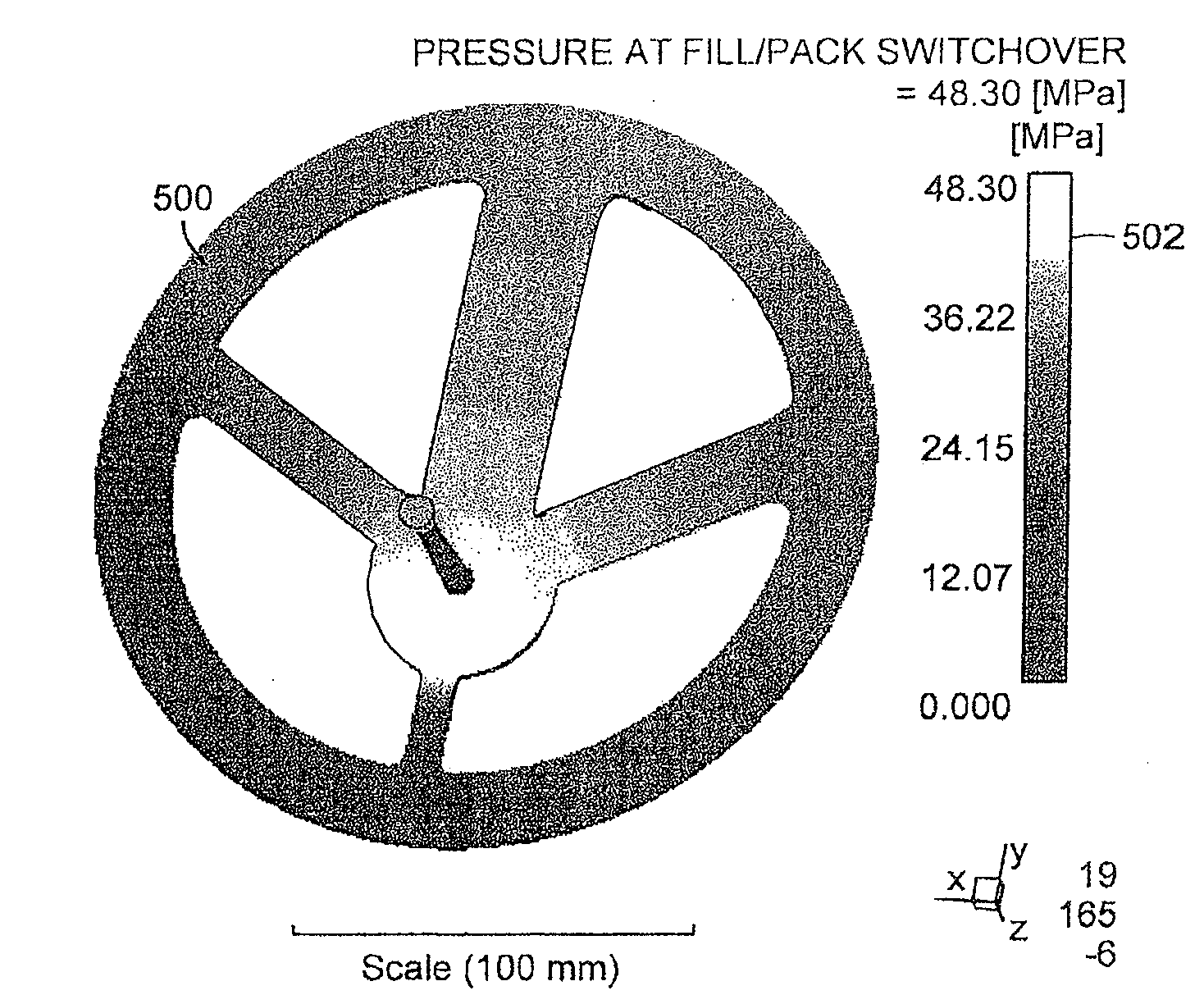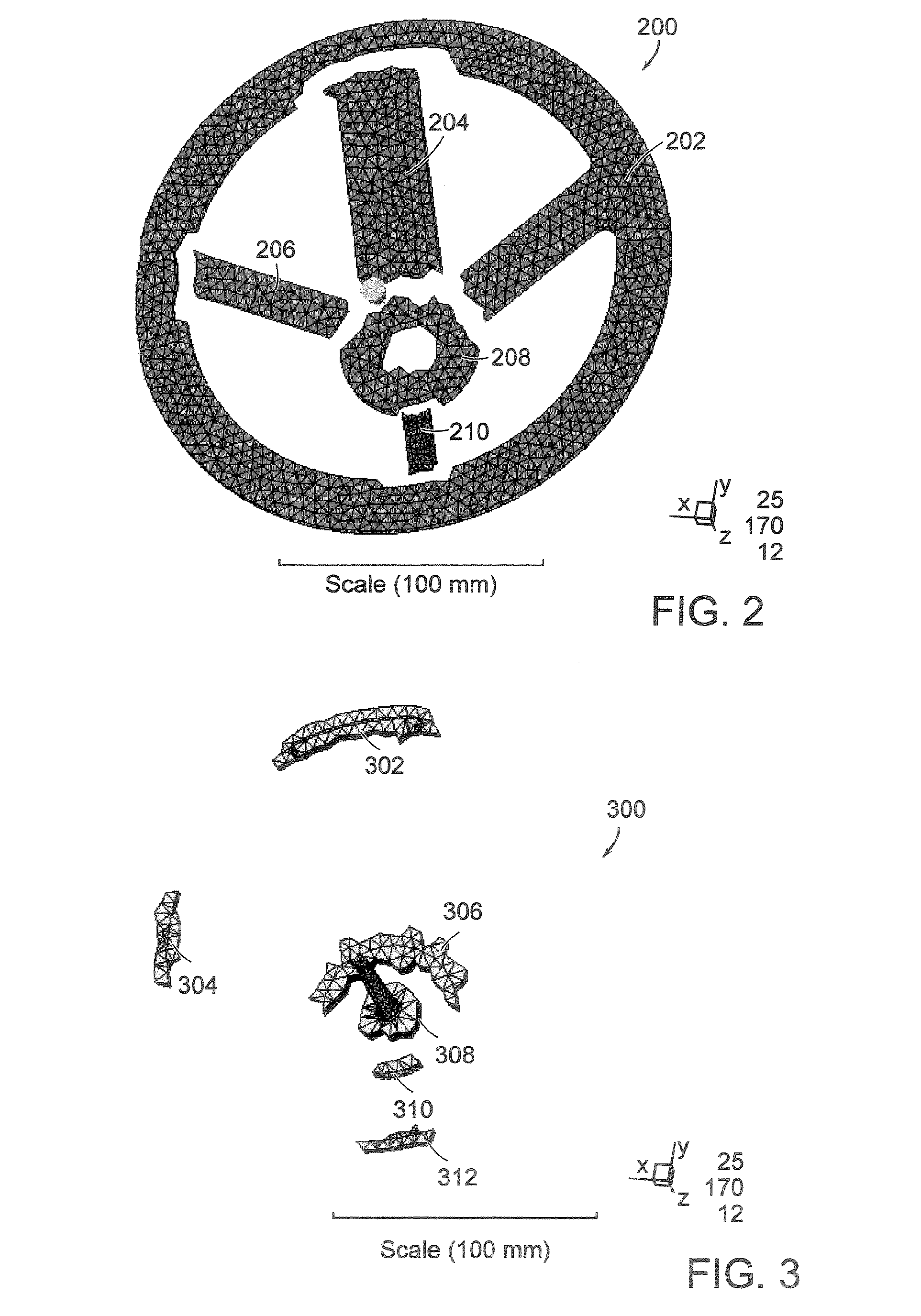Apparatus and methods for performing process simulation using a hybrid model
a hybrid model and process simulation technology, applied in the field of process simulation and analysis, can solve the problems of complex geometries of injection molding plastic, significant computational time and computer resources, and complex modeling processes, and achieve the effects of less costly simulations, reduced computational time and computer resources, and negligible impact on accuracy
- Summary
- Abstract
- Description
- Claims
- Application Information
AI Technical Summary
Benefits of technology
Problems solved by technology
Method used
Image
Examples
Embodiment Construction
[0062]Table 1 lists various symbols used herein and is provided as a convenience for the reader. Entries in Table 1 do not serve to limit interpretation of embodiments of the invention described herein.
TABLE 1NotationSymbolDescription∇Gradient operatorαThermaldiffusivity:λρcpβExpansivity:1∂VV∂TδKronecker delta{dot over (γ)}Shear rateηViscosityκCompressibility:-1∂VV∂PλThermal conductivityνPoisson's ratioρDensityσStressτStress (deviatoric part)υVelocity{right arrow over (υ)}Velocity vectorυx, υy, υzVelocity componentsωRelaxation factorξFlow ‘conductance’ΔIncrement, i.e., in timestepΛLocally-defined quantityΩDomain∂ΩBoundary of domain, Mold / plastic interfacecpSpecific heatdDistance of (tet) node from model walleElement∂eBoundary of elementg, {right arrow over (g)}Gravity / body-force and gravity / body-force vectorhHalf wall thickness of plastic component / partkCoefficient matrix of elementnUnit normal vectorrLoad vector of elementtTimeAAreaAeArea of elementAeT,AeBTop and bottom area of a (...
PUM
| Property | Measurement | Unit |
|---|---|---|
| thickness | aaaaa | aaaaa |
| bend angle | aaaaa | aaaaa |
| edge bend angle | aaaaa | aaaaa |
Abstract
Description
Claims
Application Information
 Login to View More
Login to View More - R&D
- Intellectual Property
- Life Sciences
- Materials
- Tech Scout
- Unparalleled Data Quality
- Higher Quality Content
- 60% Fewer Hallucinations
Browse by: Latest US Patents, China's latest patents, Technical Efficacy Thesaurus, Application Domain, Technology Topic, Popular Technical Reports.
© 2025 PatSnap. All rights reserved.Legal|Privacy policy|Modern Slavery Act Transparency Statement|Sitemap|About US| Contact US: help@patsnap.com



